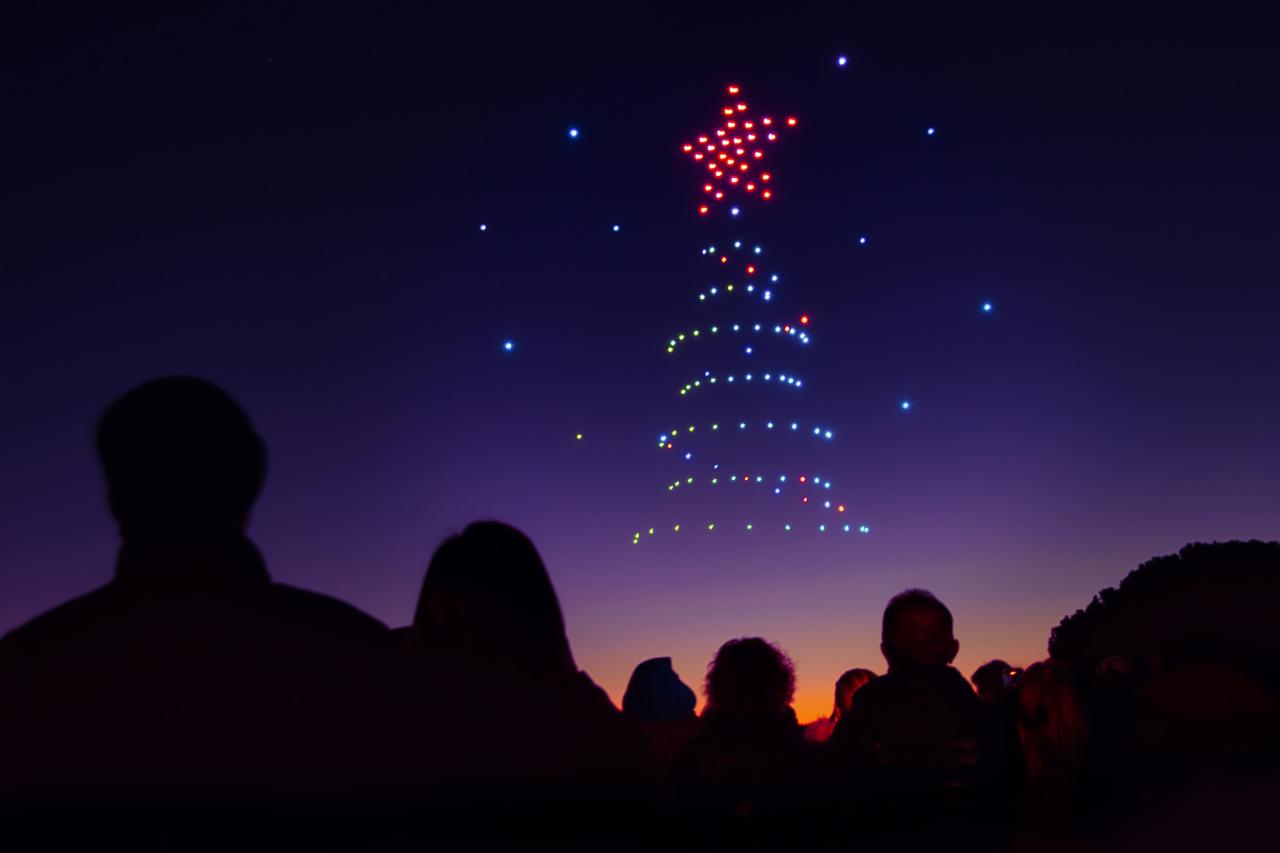Florida drone accidents are on the rise, presenting a complex interplay of technological advancement, regulatory oversight, and human error. This analysis delves into the various facets of these incidents, examining the common causes, legal ramifications, and preventative measures crucial for ensuring safer drone operations within the Sunshine State. We will explore the different types of accidents, from recreational mishaps to commercial drone failures, and investigate the impact these incidents have on property, people, and the environment.
Understanding the frequency and patterns of these accidents is key to developing effective safety protocols. This exploration will examine the roles of pilot skill, weather conditions, mechanical malfunctions, and legal frameworks in shaping the drone accident landscape in Florida. We will also consider the economic implications of these events, including repair costs and insurance claims.
Florida Drone Accidents: A Comprehensive Overview
The increasing popularity of drones in Florida, for both recreational and commercial purposes, has unfortunately led to a rise in drone-related accidents. This article delves into the various aspects of these accidents, examining their types, causes, legal implications, safety measures, and overall impact.
Recent Florida drone accidents highlight the importance of safety regulations in the industry. These incidents underscore the need for responsible operation, especially considering the spectacular displays, like the orlando drone show , which showcase the technology’s potential. However, the inherent risks associated with drone operation in Florida, even in controlled environments, necessitate continuous improvement in safety protocols to prevent future mishaps.
Types of Florida Drone Accidents and Their Frequency
Drone accidents in Florida can be broadly categorized based on the type of drone involved (recreational or commercial) and the circumstances surrounding the incident. Common scenarios include collisions with objects (trees, buildings, other drones), loss of control due to pilot error or technical malfunction, and unauthorized flights near restricted airspace (e.g., airports).
Hypothetical data suggests the following distribution of accident types across Florida regions. Note that these figures are illustrative and not based on official statistics.
| Accident Type | Frequency (Annual Estimate) | Location (Florida Region) | Cause |
|---|---|---|---|
| Collision with Object | 150 | South Florida | Pilot inattention |
| Loss of Control (Pilot Error) | 100 | Central Florida | Inadequate training |
| Mechanical Failure | 50 | North Florida | Battery malfunction |
| Unauthorized Airspace Entry | 25 | Various | GPS issues/Pilot unawareness |
Causes of Florida Drone Accidents

Several factors contribute to drone accidents in Florida. Understanding these causes is crucial for implementing effective preventative measures.
Pilot error is frequently cited as a primary cause. This encompasses a range of issues, from insufficient training and lack of experience to poor judgment and negligence. Adverse weather conditions, such as strong winds, heavy rain, and thunderstorms, significantly impact drone stability and control. Mechanical failures, including battery malfunctions, motor issues, and GPS errors, can also lead to accidents.
Comparing human error and mechanical issues reveals that human error often plays a larger role, though mechanical failures can be catastrophic when they occur.
Legal and Regulatory Aspects of Drone Accidents in Florida

Drone operation in Florida is governed by both state and federal regulations. The FAA (Federal Aviation Administration) sets national standards, while Florida may have specific local ordinances regarding airspace restrictions. Accidents can result in legal consequences, including fines, lawsuits, and potential criminal charges depending on the severity and circumstances of the accident. Liability often falls on the drone operator, though manufacturers could be held accountable for proven product defects.
Examples of legal cases are not readily available publicly due to privacy and ongoing litigation but hypothetical cases can be constructed based on similar legal precedents.
Safety Measures and Prevention of Drone Accidents
Prioritizing safety is paramount for responsible drone operation. A pre-flight checklist is essential, including inspecting the drone for any damage, checking battery levels, verifying GPS functionality, and reviewing weather conditions. Best practices involve thorough flight planning, avoiding crowded areas, and establishing clear emergency procedures. Safety technologies such as obstacle avoidance systems and geofencing can mitigate risks. Regular drone maintenance, including cleaning and component inspections, is critical for ensuring optimal performance and preventing mechanical failures.
- Pre-flight inspection checklist
- Weather monitoring
- Flight planning
- Emergency procedures
- Regular maintenance
Safety technologies that can mitigate risks include:
- Obstacle avoidance systems
- Return-to-home (RTH) functionality
- Geofencing capabilities
- Redundant systems (e.g., dual batteries)
Impact and Consequences of Drone Accidents
Drone accidents can have significant consequences, affecting property, people, and the environment. These impacts can range from minor damage to substantial losses, with varying levels of severity.
Recent news about a Florida drone accident highlights the increasing concerns surrounding unmanned aerial vehicles. The incident prompts reflection on the broader implications of drone technology, particularly in conflict zones like Ukraine, where the use of drones is escalating rapidly. For instance, the recent ukraine drone attack on russia underscores the potential for both military and civilian applications to cause significant damage.
Understanding these global implications is crucial for developing effective safety regulations for drone operations in Florida and elsewhere.
| Consequence Type | Description | Severity | Example Scenario |
|---|---|---|---|
| Property Damage | Damage to buildings, vehicles, or other property. | Low to High | Drone crashing into a parked car, causing a dent. |
| Personal Injury | Injuries to people caused by a falling drone or its propellers. | Low to Critical | A drone striking a pedestrian, causing a minor head injury. |
| Environmental Damage | Damage to ecosystems from debris or chemical spills. | Low to Moderate | Drone battery leaking chemicals into a wetland. |
| Economic Impact | Repair costs, insurance claims, and lost productivity. | Low to High | Expensive repairs to a damaged building. |
Illustrative Examples of Drone Accidents

Several hypothetical scenarios highlight the potential consequences of drone accidents.
Scenario 1: Populated Area A drone malfunctioning over a crowded beach in Miami loses control, crashing into a group of sunbathers. The propellers cause minor cuts and bruises to several individuals, leading to medical expenses and potential legal action against the drone operator.
Scenario 2: Sensitive Location A recreational drone, operating near an airport without proper authorization, experiences a battery failure. It falls towards the runway, creating a significant safety hazard and potentially disrupting air traffic. The FAA could impose hefty fines and the operator could face criminal charges.
Recent news reports detail a concerning Florida drone accident, highlighting the inherent risks associated with unmanned aerial vehicles. This incident underscores the broader issue of safety protocols in drone operations, a concern amplified by incidents like the one detailed in this report on a drone show accident , which involved multiple drones. Understanding these various scenarios is crucial for improving safety regulations and preventing future Florida drone accidents.
Scenario 3: Collision with Another Object A commercial drone carrying a package collides with a power line during a delivery. The drone is severely damaged, the package is lost, and the power line is temporarily disabled, causing a power outage in the surrounding area. This results in significant repair costs for the drone and the power company, as well as potential disruption to business operations.
Ultimately, mitigating the risk of Florida drone accidents necessitates a multifaceted approach. This includes rigorous pilot training, adherence to strict safety protocols, regular drone maintenance, and a robust regulatory framework that keeps pace with technological advancements. By understanding the causes, consequences, and legal implications of these incidents, we can collectively work towards a safer future for drone operations in Florida.
Continued research and proactive measures are essential to minimizing the potential for future accidents and protecting both people and property.
Questions and Answers
What is the average cost of a drone accident in Florida?
The cost varies greatly depending on the extent of damage, but can range from hundreds to tens of thousands of dollars, encompassing repair costs, insurance claims, and potential legal fees.
Are there specific areas in Florida with higher drone accident rates?
Data on specific accident locations is limited publicly, but areas with high population density, significant tourism, and proximity to airports or sensitive locations likely see more incidents.
What insurance coverage is recommended for drone operators in Florida?
Liability insurance is strongly recommended, providing coverage for damages caused by a drone accident. The amount of coverage should reflect the potential risks associated with the type and frequency of drone operations.
Can I fly a drone near an airport in Florida?
Flying near airports requires specific authorization and adherence to strict FAA regulations. Unauthorized operation near airports carries significant penalties.
